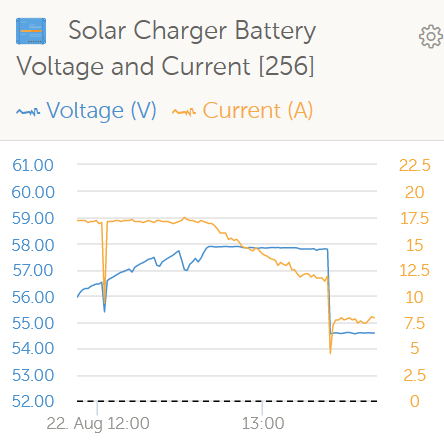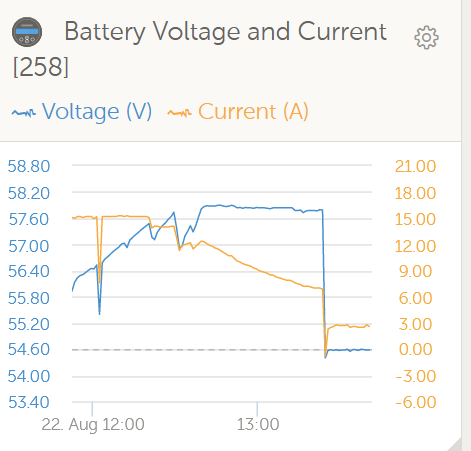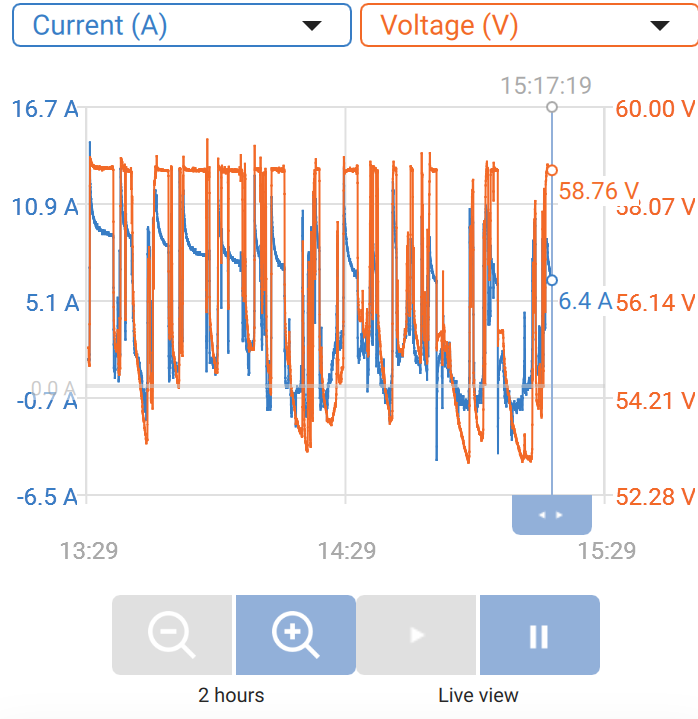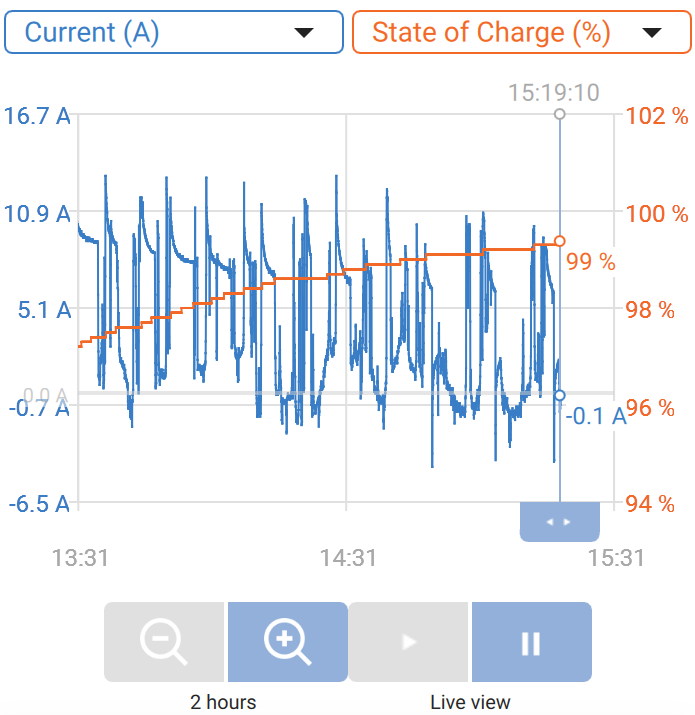Hi, I do have two AGM batteries with a total of 190Ah, 200W Solar Panels and a SmartSolar 75/15. It happens that my batteries go down to 50% and due to not enough sun the charging back to 100% takes a few days. But then only 50 minutes of adaptive absorption is applied. As far as I understand 4 hours would be preferable after a discharge to 50%. But as there are other days where the batteries only move down to around 80% and are fully charged again the same day, 4 hours absorption may not be the best option for every day? Do I understand correctly? And what is the best setting to use? Should I change the setting once a while to get a full 4 hours absorption?

The image shows a 50 minute absorption time today, after 6 days of bulk loading. The batteries where down to around 50% on the 17th. Thats when I turned off the fridge to get them charged again.


 What the batts are getting.. smoother A curve, which I hope you can see starting to level off just before 7A (the mppt Tail setpoint). Then it trips to Float.
What the batts are getting.. smoother A curve, which I hope you can see starting to level off just before 7A (the mppt Tail setpoint). Then it trips to Float. Overall 2hr 28min in Abs (so far), unusually long for me, but it's counting time that it wasn't actually holding full Abs V. Recall too that I mentioned '~99%' at end of Abs. This snip where I wanna be..
Overall 2hr 28min in Abs (so far), unusually long for me, but it's counting time that it wasn't actually holding full Abs V. Recall too that I mentioned '~99%' at end of Abs. This snip where I wanna be..
 This without a programmed sync for at least a month, but maybe reached 100.0% under it's own steam twice (just) in that time.
This without a programmed sync for at least a month, but maybe reached 100.0% under it's own steam twice (just) in that time.